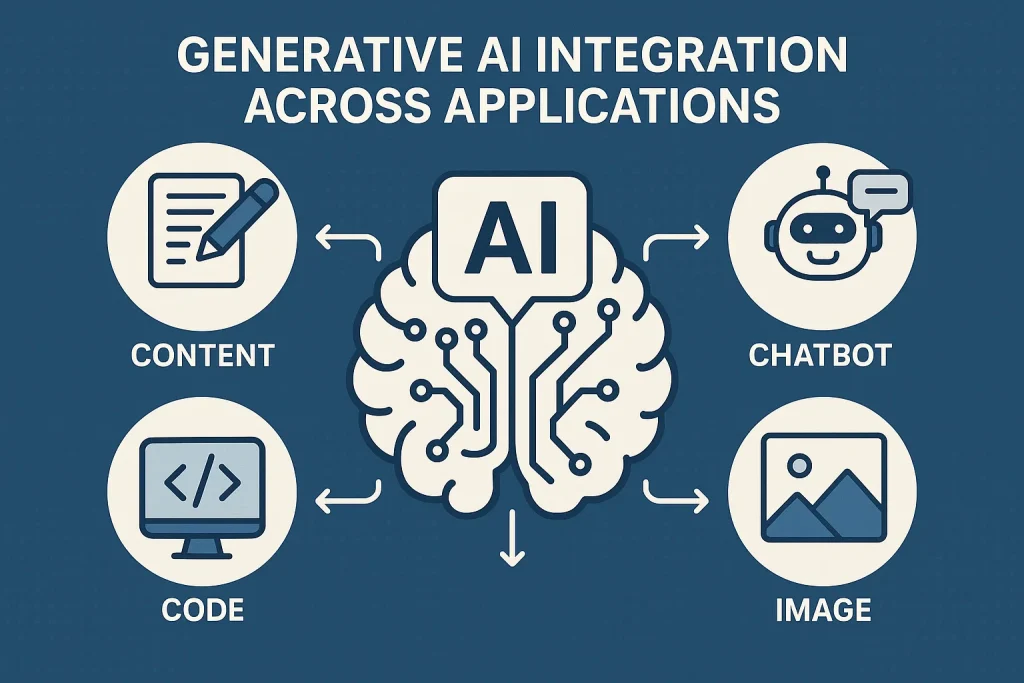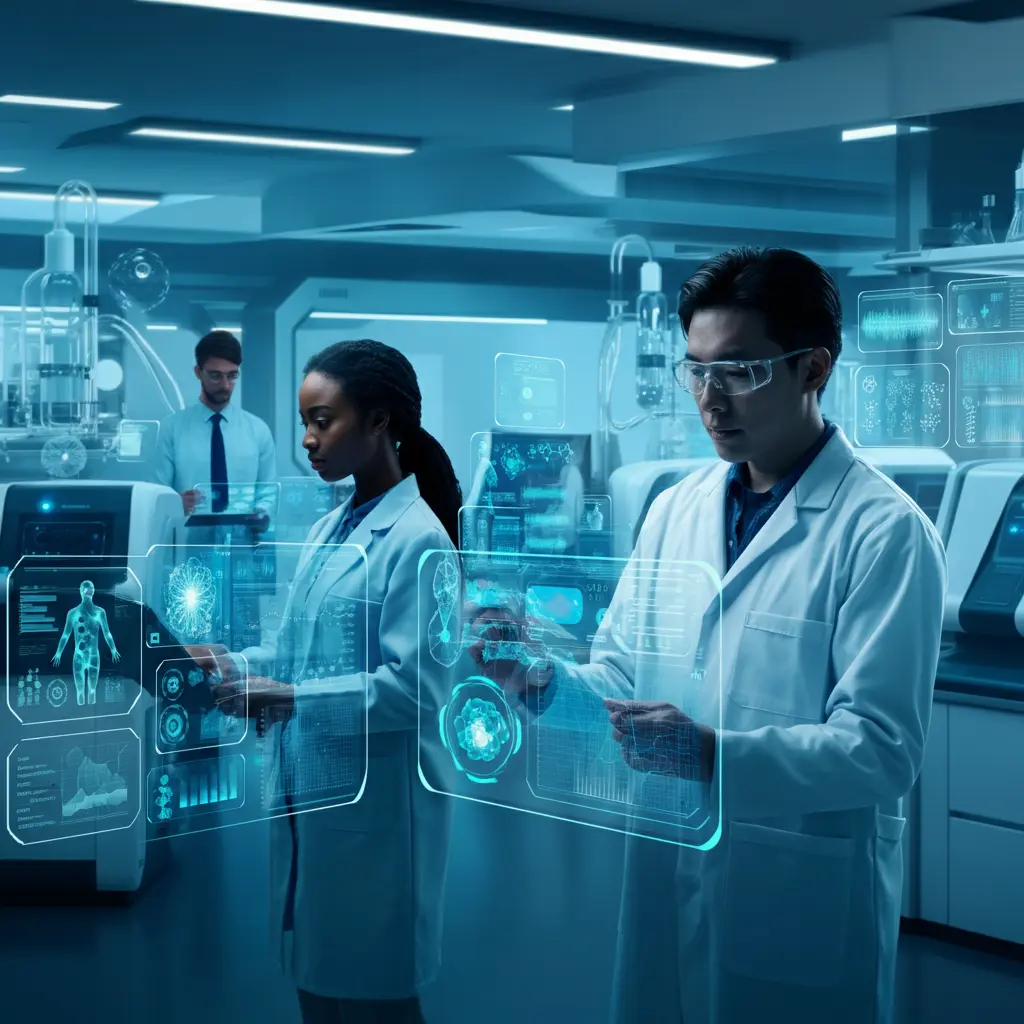As we step into 2025, generative AI is emerging as one of the most revolutionary technologies in various sectors. From healthcare and finance to marketing and software development, generative AI is reshaping how businesses operate, solve complex problems, and engage with their audiences. The profound impact of AI is evident across applications that enhance creativity, automate processes, and optimize decision-making.
In this blog, we will explore real-world insights into the integration of generative AI in different industries. By examining its current applications, challenges, and the benefits it brings, you will better understand how AI is becoming indispensable in today’s business landscape.
What is Generative AI?
Generative AI is a subset of artificial intelligence that can create new content based on patterns learned from existing data. Unlike traditional AI systems, which typically analyze and categorize data, generative AI goes a step further by generating original content that mimics human-like creativity. This could include:
1. Text Generation
| Model | Developer | Description |
|---|---|---|
| Gemini | Google DeepMind | Chatbot and AI model integrated with Google’s ecosystem. Strong in search and multi-modal tasks. |
| Claude | Anthropic | Focuses on safety and constitutional AI; used for writing, Q&A, and reasoning tasks. |
| ChatGPT (GPT-3.5, GPT-4, GPT-4o) | OpenAI | Conversational AI model capable of generating and understanding human-like text. Powers tools like ChatGPT. |
| LLaMA | Meta (Facebook) | Open-source language model optimized for academic and research purposes. |
| Mistral | Mistral AI | Lightweight, fast, and open-source models like Mistral 7B and Mixtral (Mixture of Experts). |
2. Image Generation
| Model | Developer | Description |
|---|---|---|
| DALL·E | OpenAI | Generates detailed images from text prompts. Integrated with ChatGPT’s image feature. |
| Midjourney | Midjourney Inc. | Popular for artistic and stylized AI-generated images. Works through Discord. |
| Stable Diffusion | Stability AI | Open-source model used for high-quality and customizable image generation. |
| Adobe Firefly | Adobe | AI image generator integrated into Adobe Creative Cloud tools. |
3. Audio & Music Generation
| Model | Developer | Description |
|---|---|---|
| Jukebox | OpenAI | Neural net that generates music, including lyrics, in various genres and styles. |
| AudioCraft | Meta | Text-to-music and sound generation model with open-source components. |
| Suno AI | Suno | Realistic music and vocal generation based on text prompts. Popular on platforms like TikTok. |
| Voicemod | Voicemod | AI voice changer and generator with real-time capabilities. |
4. Video Generation
| Model | Developer | Description |
|---|---|---|
| Sora | OpenAI | Text-to-video model that generates realistic or imaginative video clips. Still in limited access. |
| Runway Gen-2 | Runway | Multi-modal AI for video generation, editing, and style transfer. |
| Pika Labs | Pika | Real-time video generation from prompts; focuses on storytelling and animation. |
5. Code Generation
| Model | Developer | Description |
|---|---|---|
| GitHub Copilot | OpenAI + GitHub | AI coding assistant based on GPT models; integrated into VS Code and GitHub. |
| Code Llama | Meta | Specialized LLaMA model optimized for generating and understanding code. |
| CodeWhisperer | Amazon | AI-powered code generator integrated with AWS and IDEs. |
These systems are trained on large datasets and use algorithms to produce content that can be indistinguishable from human-made work, making them invaluable for various use cases.
Generative AI in Healthcare
Accelerating Drug Discovery and Personalized Medicine
The healthcare industry is witnessing the power of Generative AI to transform drug discovery and treatment plans. Traditionally, discovering a new drug can take over a decade, costing billions. However, Generative AI is streamlining the process by predicting molecular structures and simulating biological reactions to identify promising compounds.
For example, Insilico Medicine utilized AI to discover a novel drug for fibrosis in just 46 days. This is a significant reduction from the 12-18 months typical in the traditional drug development process.
Personalized Medicine Through AI
In personalized medicine, AI uses vast datasets, including genetic information and treatment histories, to develop individualized treatment plans. By focusing on a patient’s unique genetic makeup, Generative AI offers the possibility of more accurate and effective treatments, reducing adverse effects.
Insight:
According to a study published in Nature Biotechnology, AI-driven algorithms can predict drug efficacy with up to 90% accuracy, a game-changer for pharmaceutical companies looking to bring life-saving medications to market more efficiently.
Use Case: Generative AI for Medical Coding: Cutting Errors and Speeding Payments’
Medical billing is one of the most tedious and error-prone parts of healthcare operations. Coders often have to sift through complex clinical notes and manually assign CPT or ICD codes—a process that’s slow, stressful, and highly susceptible to mistakes. This not only delays reimbursements but also leads to costly claim denials, compliance issues, and staff burnout.
Deloitte highlights this challenge in their GenAI use case library. Their solution? Using Generative AI to automatically analyze clinical documentation and suggest the correct codes. This can significantly reduce manual effort, speed up the submission process, and improve coding accuracy across the board.
The result is faster payments, fewer human errors, and more time for teams to focus on complex or high-priority cases. It’s a smart application of AI that directly improves both the financial health and workflow of healthcare organizations.
Source: Deloitte GenAI
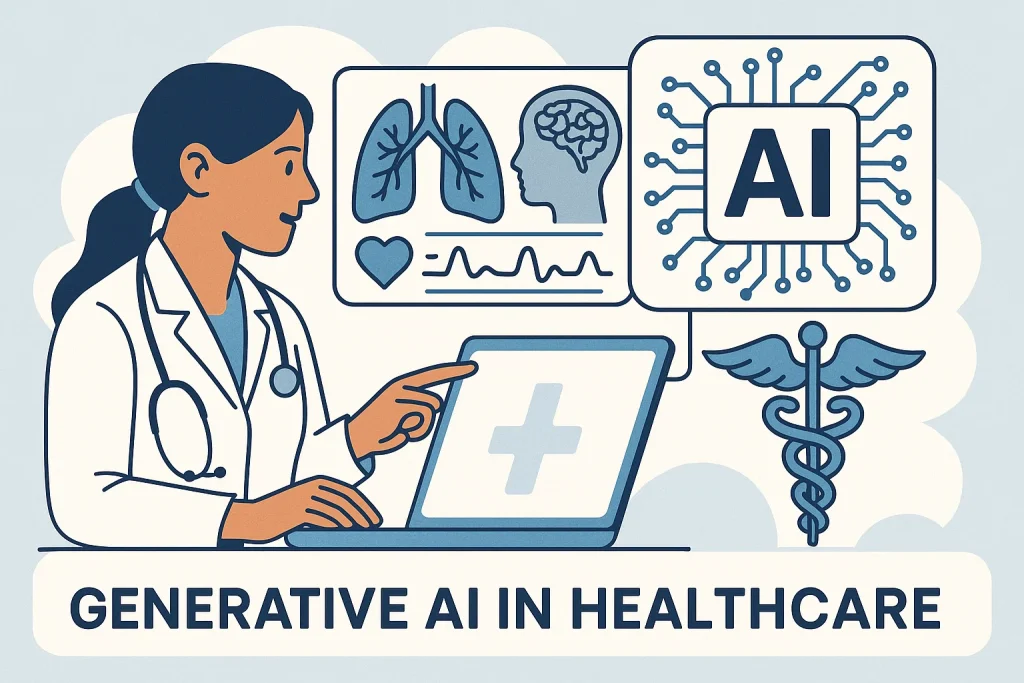
Read Also: How AI is Shaping the Future of Precision Medicine?
Generative AI in Finance
Enhancing Risk Management and Fraud Detection
The finance sector is increasingly relying on Generative AI for improving decision-making, managing risk, and detecting fraud. AI models analyze vast amounts of transaction data, identify irregularities, and forecast market movements.
AI vs. Traditional Fraud Detection Efficiency
| Method | Fraud Detection Efficiency |
|---|---|
| Traditional Fraud Detection | 70% |
| AI-Powered Fraud Detection | 95% |
For example, Goldman Sachs has integrated AI into their trading platforms to enhance algorithmic trading strategies. The AI models can analyze real-time market data and execute trades at lightning speed, optimizing investment decisions and boosting returns.
Insight:
Goldman Sachs employs Generative AI in their trading systems to forecast stock market trends and improve trading decisions, achieving a significant increase in the accuracy of their financial models.
Use Case: AI‑Driven Financial Reporting
Finance teams spend an enormous amount of time gathering data, writing narratives, designing visuals, and creating a coherent financial report each quarter. It’s a labor-intensive process that often delays strategic decision-making.
According to Rapid Innovation, generative AI is transforming this workflow by automatically:
- Collating and analyzing data from ledgers and performance systems
- Drafting polished narratives for income statements, variance explanations, and KPIs
- Generating visuals like charts and insights that highlight trends or anomalies
Source: Generative AI in Financial Reporting
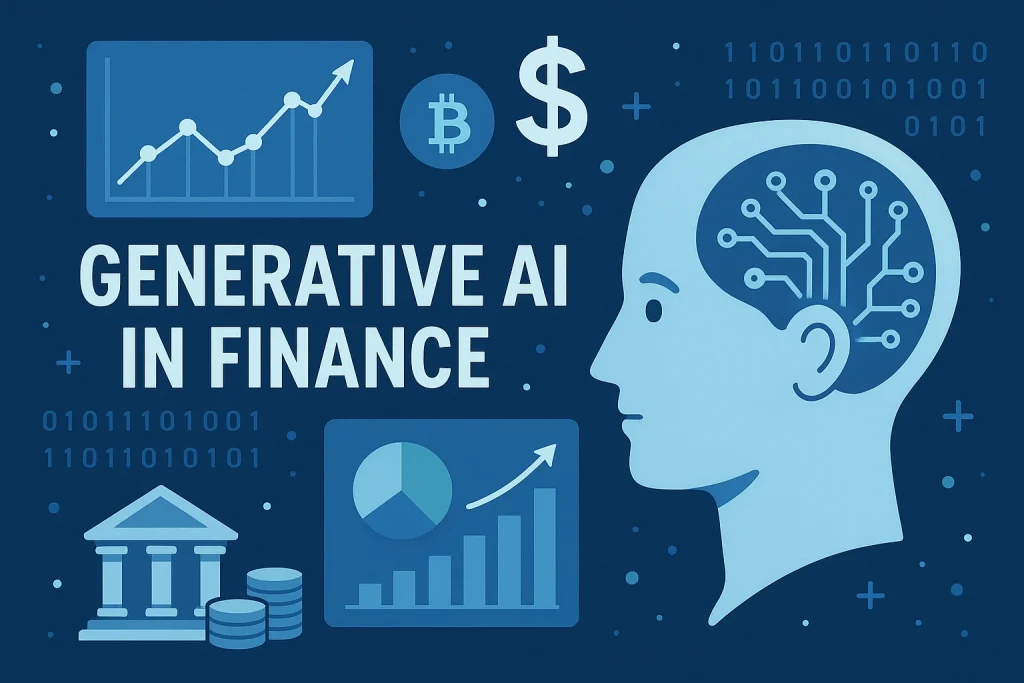
Generative AI in Marketing
Revolutionizing Content Creation
Marketers are embracing Generative AI to create personalized content, automate campaigns, and boost engagement. AI is used to generate targeted social media posts, email content, and even personalized advertisements based on customer preferences and behavior.
For example, Coca-Cola launched an AI-driven campaign called “Create Real Magic,” where users could submit their photos and create personalized AI-generated content. This campaign increased customer engagement by 40%.
Survey Results: Impact of AI on Marketing Efficiency
- 40% of marketers say AI helps them create more personalized content.
- 35% of marketers report an increase in engagement through AI-powered campaigns.
- 25% state that AI reduces content creation time by more than 50%.
Insight:
According to McKinsey research, generative AI empowers marketers to create hyper-personalized content at scale—enabling tailored messaging, tone, imagery, and offers across thousands of micro-segments. Early adopters, like a European telecom, saw a 10% increase in customer engagement and 50× faster content generation, while targeted promotions yielded a 1–3% boost in margins
Source: Unlocking the next frontier of personalized marketing – McKinsey
Use Case: One-to-Many Marketing Made Personal with GenAI
Marketers often struggle with creating email campaigns that feel personalized without burning out their teams. Writing multiple versions of email copy—subject lines, body text, offers—can be slow, expensive, and hit-or-miss on engagement.
AWS—via Amazon Personalize and Amazon Bedrock—offers a smarter approach:
- Segment your audience using Amazon Personalize to identify users who are most likely to respond (for example, sneaker enthusiasts).
- Generate tailored copy using generative AI: give it a prompt like “Create an email for sneaker‑heads featuring the new Ultra Fame II shoe and discount code FAME10.”
- Produce multiple variations in minutes—from subject lines to email bodies—perfect for A/B testing.
Source: Amazon Personalize and generative AI
Generative AI in Software Development
Accelerating Development and Improving Code Quality
In the software industry, Generative AI is used to generate code, debug programs, and optimize the development process. Tools like GitHub Copilot assist developers by suggesting code, offering solutions to bugs, and improving the overall coding efficiency.
AI vs. Traditional Development Time
| Method | Average Time to Complete Task | Errors Found |
|---|---|---|
| Traditional Software Development | 8 hours | 3 errors |
| AI-Assisted Development | 4 hours | 1 error |
Insight:
GitHub Copilot uses OpenAI’s Codex model to automatically suggest code snippets, enabling developers to focus on more complex tasks. According to Microsoft, this tool has reduced development time by approximately 30% for some tasks.
Use Case: Faster, Smarter Coding with AI Assistance
Developers often spend a huge chunk of time writing repetitive boilerplate code, fixing bugs, or updating legacy systems. This slows down innovation and increases costs.
Generative AI tools are changing the game. For example, Amazon Q Developer helped a team migrate over 1,000 Java applications from Java 8 to Java 17 in just two days—something that would normally take months. The AI automatically upgraded code, generated tests, fixed security vulnerabilities, and created documentation, all while improving code quality.
Similarly, Morgan Stanley’s DevGen.AI transformed legacy code into human-readable documentation and modernization plans, saving the company over 280,000 developer-hours this year.
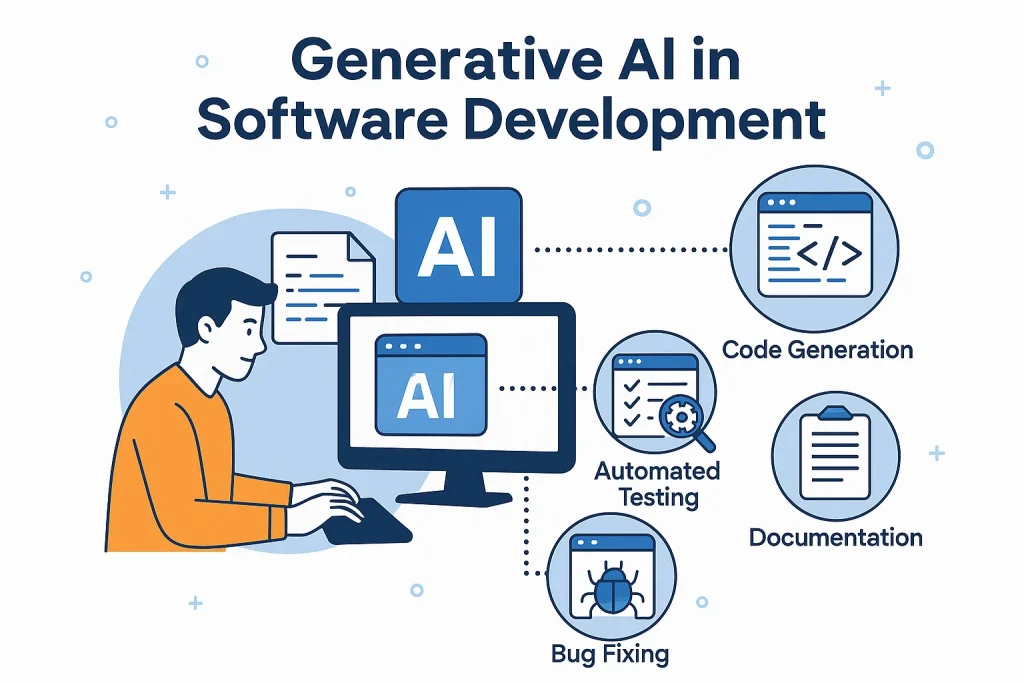
Generative AI in Customer Service
AI-Powered Chatbots and Virtual Assistants
Generative AI is enhancing customer service by enabling 24/7 support through AI-powered chatbots and virtual assistants. These tools can engage customers, answer queries, and resolve issues autonomously.
Customer Service Performance Improvement with AI
| Metric | Before AI | After AI Integration |
|---|---|---|
| Response Time | 30 minutes | 5 minutes |
| Customer Satisfaction | 70% | 90% |
| Operational Cost | High | 25% reduction |
Best Practices for Integrating Generative AI
To successfully integrate Generative AI into your business, you must follow a strategic approach. Here are a few best practices to help guide your AI journey:
- Define Clear Use Cases: Identify specific business functions that will benefit from AI, such as content creation, customer service, or data analysis.
- Select the Right AI Tools: Choose AI models and platforms that align with your specific use case. For example, use GPT-3 for content generation and Codex for code writing.
- Ensure Data Privacy and Compliance: Since AI models rely on vast amounts of data, ensure that you follow strict privacy guidelines like GDPR and protect customer information.
- Monitor and Optimize: Continuously assess the performance of your AI models and make adjustments to improve their accuracy and efficiency.
The Future of Generative AI
Looking ahead, Generative AI is poised to evolve further, creating more advanced applications and becoming an integral part of business operations. We can expect AI to enhance fields such as education, logistics, and entertainment. Moreover, as AI becomes more sophisticated, businesses will automate even more complex tasks, reducing costs and improving operational efficiency.
However, there are challenges to overcome, including ethical concerns, data biases, and the need for regulation. As AI technologies continue to develop, addressing these challenges will be crucial to ensure that Generative AI is used responsibly.
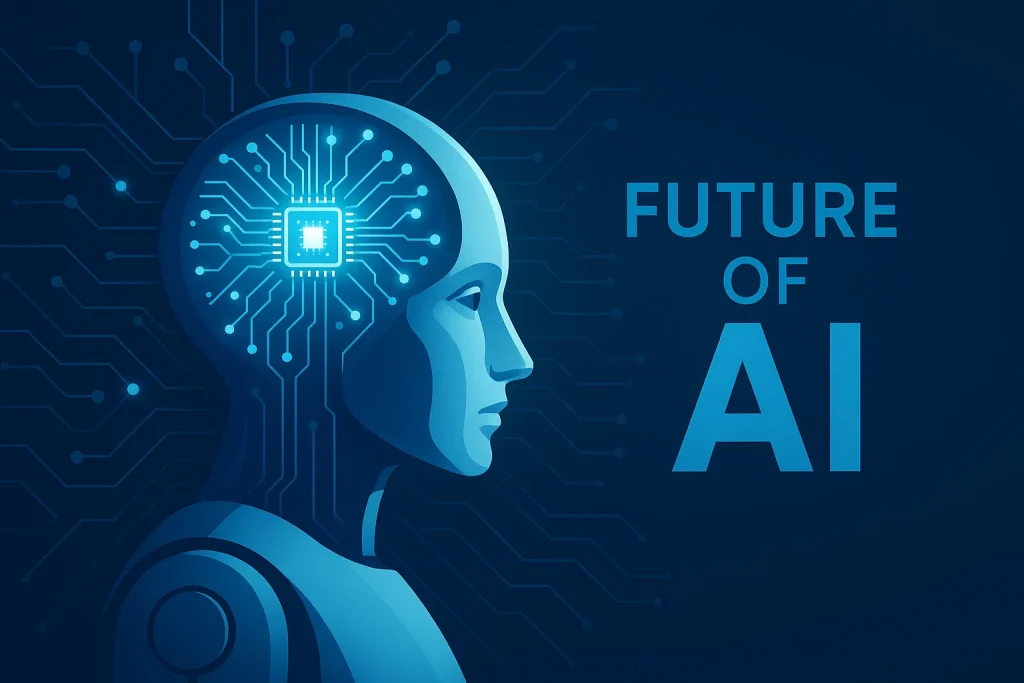
Conclusion
Generative AI is revolutionizing industries by enabling businesses to automate tasks, create personalized content, enhance decision-making, and improve customer service. As we move through 2025 and beyond, Generative AI will continue to drive innovation and offer new opportunities for businesses to improve their operations.
By adopting Generative AI strategically and monitoring its performance, companies can unlock immense value and gain a competitive edge in an increasingly AI-driven world.

